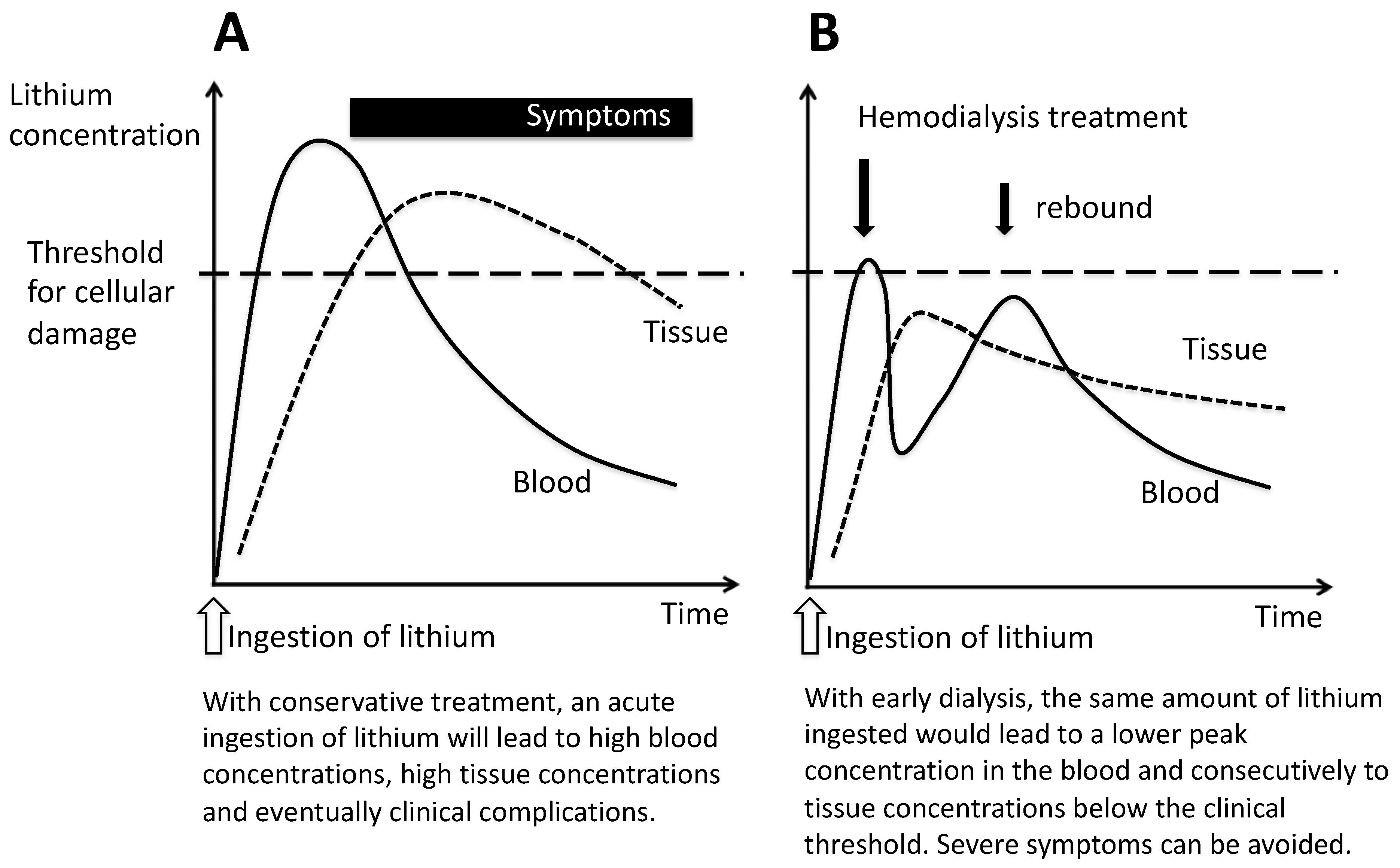Comment on Liu et al. Hemodialysis Treatment for Patients with Lithium Poisoning. Int. J. Environ. Res. Public Health 2022, 19, 10044
Author Contributions
Conflicts of Interest
References
- Liu, Y.-H.; Tsai, K.-F.; Hsu, P.-C.; Hsieh, M.-H.; Fu, J.-F.; Wang, I.-K.; Liu, S.-H.; Weng, C.-H.; Huang, W.-H.; Hsu, C.-W.; et al. Hemodialysis Treatment for Patients with Lithium Poisoning. Int. J. Environ. Res. Public Health 2022, 19, 10044. [Google Scholar] [CrossRef] [PubMed]
- Ott, M.; Stegmayr, B.; Renberg, E.S.; Werneke, U. Lithium intoxication: Incidence, clinical course and renal function—A population-based retrospective cohort study. J. Psychopharmacol. 2016, 30, 1008–1019. [Google Scholar] [CrossRef] [PubMed]
- Thomsen, K.; Schou, M. Renal lithium excretion in man. Am J Physiol. 1968, 215, 823–827. [Google Scholar] [CrossRef] [PubMed]
- Vodovar, D.; El Balkhi, S.; Curis, E.; Deye, N.; Mégarbane, B. Lithium poisoning in the intensive care unit: Predictive factors of severity and indications for extracorporeal toxin removal to improve outcome. Clin. Toxicol. 2016, 54, 615–623. [Google Scholar] [CrossRef] [PubMed]
- Ott, M.; Stegmayr, B.; Salander Renberg, E.; Werneke, U. Prognosis and outcome of severe lithium poisoning: Authors’ reply. J. Psychopharmacol. 2017, 31, 1275–1277. [Google Scholar]

Disclaimer/Publisher’s Note: The statements, opinions and data contained in all publications are solely those of the individual author(s) and contributor(s) and not of MDPI and/or the editor(s). MDPI and/or the editor(s) disclaim responsibility for any injury to people or property resulting from any ideas, methods, instructions or products referred to in the content. |
© 2023 by the authors. Licensee MDPI, Basel, Switzerland. This article is an open access article distributed under the terms and conditions of the Creative Commons Attribution (CC BY) license (https://creativecommons.org/licenses/by/4.0/).
Share and Cite
Ott, M.; Werneke, U. Comment on Liu et al. Hemodialysis Treatment for Patients with Lithium Poisoning. Int. J. Environ. Res. Public Health 2022, 19, 10044. Int. J. Environ. Res. Public Health 2023, 20, 5843. https://doi.org/10.3390/ijerph20105843
Ott M, Werneke U. Comment on Liu et al. Hemodialysis Treatment for Patients with Lithium Poisoning. Int. J. Environ. Res. Public Health 2022, 19, 10044. International Journal of Environmental Research and Public Health. 2023; 20(10):5843. https://doi.org/10.3390/ijerph20105843
Chicago/Turabian StyleOtt, Michael, and Ursula Werneke. 2023. "Comment on Liu et al. Hemodialysis Treatment for Patients with Lithium Poisoning. Int. J. Environ. Res. Public Health 2022, 19, 10044" International Journal of Environmental Research and Public Health 20, no. 10: 5843. https://doi.org/10.3390/ijerph20105843
APA StyleOtt, M., & Werneke, U. (2023). Comment on Liu et al. Hemodialysis Treatment for Patients with Lithium Poisoning. Int. J. Environ. Res. Public Health 2022, 19, 10044. International Journal of Environmental Research and Public Health, 20(10), 5843. https://doi.org/10.3390/ijerph20105843








